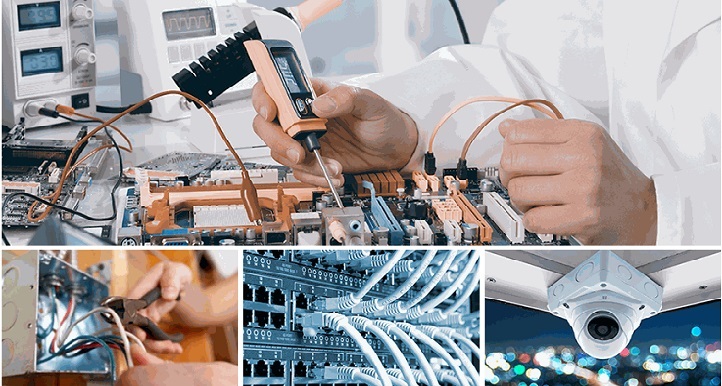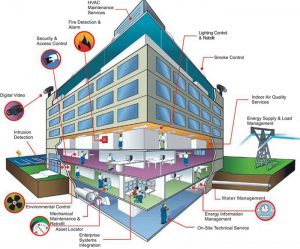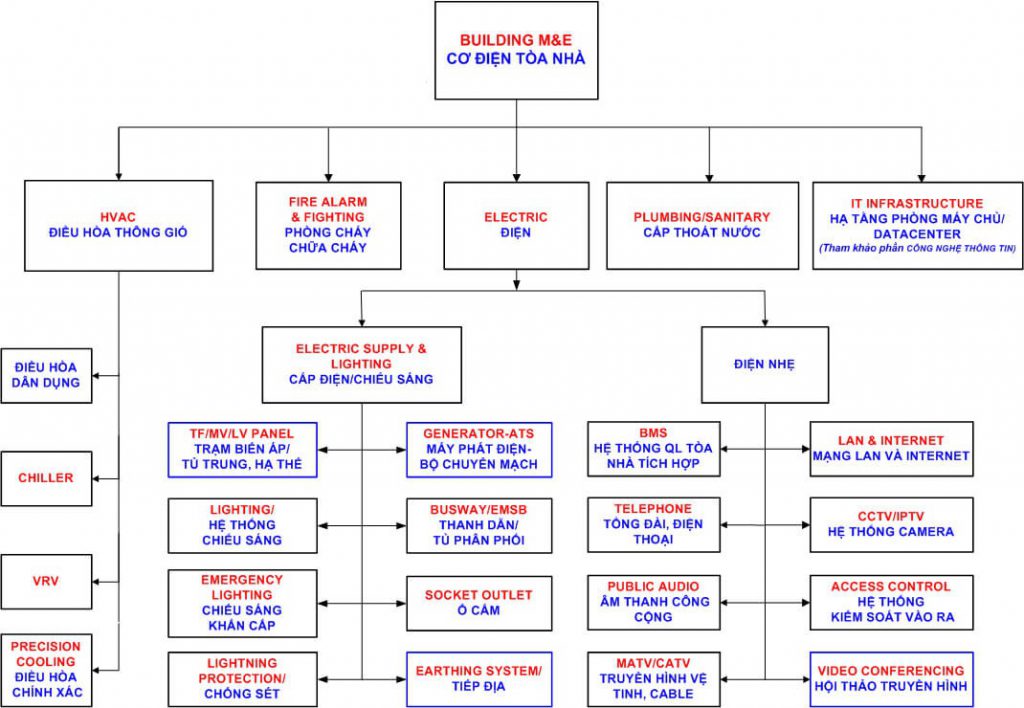Overview of The Extra Low Voltage System (ELV)

The main design principles of an ELV system are Open Communication and Open Data. An ELV design uses only a single network to connect all systems together. This network is installed by a certified contractor and uses standard industrial equipment. This eliminates the cost of using separate networks installed by different contractors. An ELV contractor will become the single point of management and handling for all network management, connectivity, security systems and provision of servers or virtual servers, helping to manage the system of the owner. Investment becomes easier and more convenient.
ELV (Extra Low Voltage System), is a combination of high-tech systems and equipment, developed and upgraded according to the purpose, functions and utilities for users. Light electricity systems account for a relatively small proportion (10-20% of the project value), but can determine the quality class of a building. A construction site is divided into two parts: the construction part and the electromechanical part (M&E). The electromechanical part consists of many related systems to form a complete operating block for the project. One of the important systems is light electricity. The main design principles of an ELV system are Open Communication and Open Data. An ELV design uses only a single network to connect all systems together. This network is installed by a certified contractor and uses standard industrial equipment. This eliminates the cost of using separate networks installed by different contractors. An ELV contractor will become the single point of management and handling for all network management, connectivity, security systems and provision of servers or virtual servers, helping to manage the system of the owner. Investment becomes easier and more convenient.
The main design principles of an ELV system are Open Communication and Open Data. An ELV design uses only a single network to connect all systems together. This network is installed by a certified contractor and uses standard industrial equipment. This eliminates the cost of using separate networks installed by different contractors. An ELV contractor will become the single point of management and handling for all network management, connectivity, security systems and provision of servers or virtual servers, helping to manage the system of the owner. Investment becomes easier and more convenient.
Depending on the size, nature and function of a building, a light power system may include the following:
– Building management system (BMS / BAS – Building Management System / Building Automation System): Used in integrating technical systems and automation of construction management.
– PABX system: Maintain connection of building communication with the outside. Includes PBX system and telephone (Telephone).
– Internal data network system (LAN, WAN) and backbone (Backbone)
– Surveillance camera system (CCTV): Used in observation or security application for construction.
– Public sound system (PA) and early warning (EWIS): Public sound system with the function of conveying information, messages and messages as well as emergency notifications in the building. In addition, this system has the ability to play BGM (Background Music) in the building.
– Access control system (Access Control): Access management system in buildings, management of doors as well as elevators.
– Fire alarm system: Fire detection and warning system in the building. Sometimes this system is integrated with Firemen Intercom system.
– Intrusion system: Anti-theft system, anti-intrusion in buildings.
– Car Parking System: Intelligent and automatic parking management system.
– Intercom system: Internal communication system, application in high-rise apartments, elevator management and parking. Hospitals often use a special type of intercom system called a nurse call.
– Satellite, cable and Internet television systems (MATV, CATV, IPTV): The television system can use signals directly from radio stations or through television service providers with different HD standards.
– Lighting Control System: Automation of monitoring & control of building lighting system.
– AV system (Audio video Visual): The system integrates images and sound in presentations, slideshows…
– Queue registration system (Queue system): Often used in hospitals and banks.
– Video Conferencing System (Teleconferencing)
– Conference and conference audio system: Including conference system, which can combine interpreters in conference rooms, international conference centers.
– Master Clock system: Central clock system, used to synchronize the time of all sub-clock as well as all systems in the building according to an accurate time source. Often used in sports centers, stadiums, airports, ports, hospitals, offices, schools…
– MPDP system: The system displays the screen.
– Traffic monitoring camera system: Application for monitoring the status of intersections, the status of traffic control systems, speed control applications or traffic violations.
– FIDS (Flight Information Display System): The system displays flight and train information. Used at airports or metro stations…
– Smart housing system (Smart Home): A total of solutions such as intelligent lighting system, security warning system, environmental monitoring system, multimedia entertainment system and many utilities. Other … will bring homeowners comfort, safety and energy saving.

Although the light electricity system has a small value in the building, it brings great benefits and convenience to users and project owners.
In short, the full provision of an ELV system will create a modern facility, comfortable for the entire building, making management easier and more flexible.
